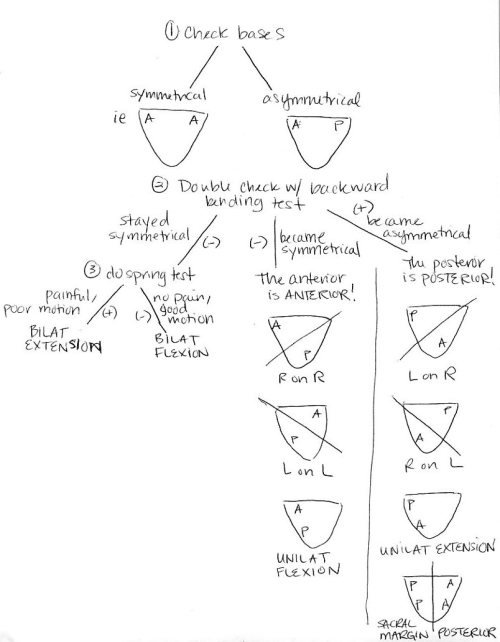RE: 32-year-old male presents to the urgent care with the complaint of acute onset mid low back pain...
right-on-left sacral torsion
At first glance, you may think there is not enough information to answer this question given that there is no information about a seated flexion test or springing of the sacral bases, however, there is sufficient information to make the diagnosis. The key to answering this question is understanding the lumbosacral biomechanics. This is explained in the rules of sacral torsions, which are as follows:
- When L5 is sidebent, the sacral oblique axis will be engaged on the same side of sidebending.
- Sidebend === oblique axis
- When L5 is rotated, the sacrum will rotate in the opposite direction on its oblique axis.
- Rotate === opposite sacrum rotate
- A positive seated flexion test will be apparent on the side opposite of the oblique axis.
In this patient's case L5 was flexed, rotated left, and sidebent left.
Using the above rules, we can infer from L5 the sacral somatic dysfunction.
With L5 rotated to the left, we know that the sacrum will rotate right.
With L5 side bent to the left, we know that the sacral oblique axis will be engaged on the left, and a positive seated flexion test would be apparent on the right.
Using this information, we now know that the patient has a right-on-left sacral torsion.
This would be classified as a backward (or posterior) sacral torsion.
Sacral Algorithm
